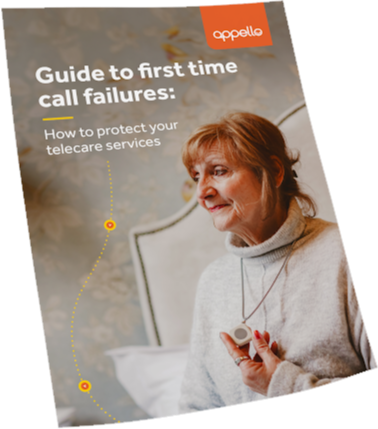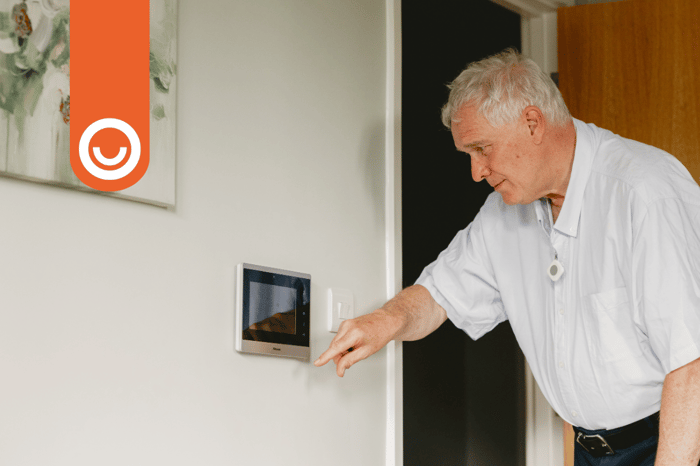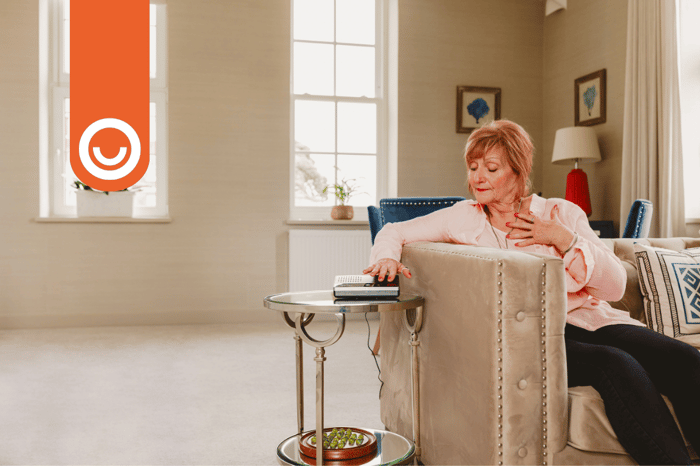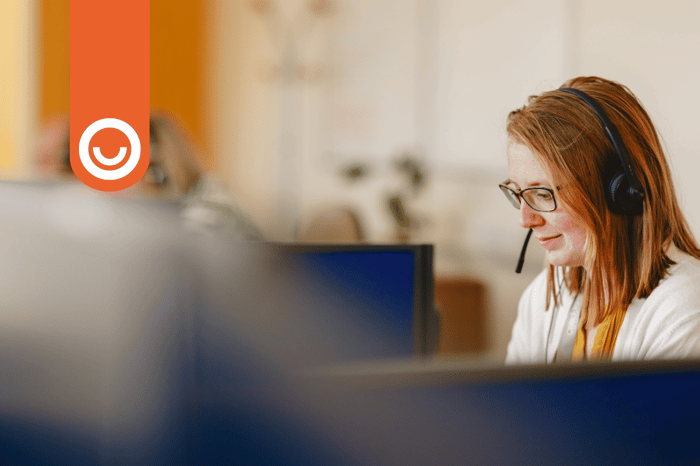Technology enabled care helps people manage their health and wellbeing at home or in a home-like environment. It has an important role to play within our health, care and housing sectors, allowing people to live more independently and stay in control of the support they receive.
In this blog post we look at:
- What technology enabled care means
- The types of technology enabled care services
- How digital has transformed technology enabled care
What is technology enabled care (TEC)?
Technology enabled care (also known as TEC) is the use of technology within health and care services to support people in their own homes, or in a home-like environment, such as assisted living.
This can provide:
- Emergency assistance
- Medical diagnosis and treatment
- Help with day-to-day living.
The way technology enabled care is used within organisations depends on who they help and how. For example, NHS England describes TEC as: “Technologies (such as telecare, telehealth, telemedicine/teleconsultation and self-care apps) that help people to manage and control chronic illness and sustain independence.”
As a housing provider or local authority, your TEC services may cover a number of situations, such as: supporting everyday activities so people can live independently, reducing risks (e.g. from falls) and providing peace of mind with emergency assistance when needed.
What are technology enabled care (TEC) services?
Technology enabled care combines a number of technologies and is used to deliver a wide range of services, including:
- Telecare
- Telehealth
- MHealth
- Telemedicine
Individuals may benefit from one or more of these TEC services at any given time, depending on their specific requirements.
For housing providers and local authorities, your main focus is likely to be telecare, although you may also combine additional elements, such as enabling access to health services.
An overview of the main TEC services
Telecare
Telecare provides 24/7 monitoring, supporting older or vulnerable individuals to live more independently. Telecare equipment is either worn on the person or installed in the home and connects to a monitoring centre, offering easy access to help in emergency situations. Telecare devices can also be used to proactively monitor the home environment or a person’s daily patterns, which allows for preventative care.
Examples of telecare devices include: personal alarms, fall detectors, bed/chair sensors, and environmental sensors, such as movement detectors or flood detectors.
Telehealth
Telehealth helps people manage long-term health conditions at home, such as diabetes and COPD. This can reduce hospital stays and/or dependence on GPs and other health services. Telehealth devices monitor vital signs and other health indicators, with details added to a telehealth platform or hub. This allows healthcare providers to track an individual’s overall health and receive alerts if there are any potential problems.
Examples of telehealth devices include: blood pressures readers, pulse oximeters and blood glucose monitors.
mHealth
mHealth is similar to telehealth but the services are accessed on mobile devices, via an app or an online platform. People are able to monitor their health, communicate with their doctors and other health/social care professionals, and receive care remotely.
mHealth devices include: mobile phones, tablets and smart watches.
Telemedicine
Telemedicine delivers healthcare services to people in the comfort of their own home via video calls and monitoring equipment. Doctors and other healthcare professionals can conduct remote appointments, diagnose certain conditions, arrange treatments and conduct follow-up appointments. This is particularly useful for patients in rural areas or those who find it difficult to get to an in-person appointment.
Telemedicine devices include: remote monitoring equipment, such as pulse oximeters or blood pressure readers, and tablets or computers with a webcam to enable video calls.
Smart Home/Internet of Things (IoT)
Mainstream consumer technology is increasingly being used to complement TEC services. This provides a helping hand for various tasks around the home.
- Smart speakers, virtual assistants, apps and other interactive tools can create reminders to take medication or track aspects of daily life such as physical activity, sleep patterns and nutrition.
- Smart home devices and assistive technologies are able to control everything from turning lights on and off to adjusting the temperature or opening curtains or blinds.
How digital has transformed technology enabled care
The use of digital has transformed TEC services, bringing a number of significant benefits.
Digital technology is both faster and more reliable. It allows for a more joined-up approach, as information can be shared more easily and services can be linked together. This means resources can be allocated more efficiently, while enabling person-centred care tailored to individuals’ needs.
With the digital phone switchover in progress, it’s important to make sure your TEC services are moved onto digital platforms. This is a major change, impacting TEC services today as the rollout of the digital network gathers momentum. It’s vital to make sure your services continue to operate safely as we head closer to the digital switchover deadlines from 2025 onwards.
Technology enabled care in supported housing
You can also take a look at our video library, which provides all the information you need to navigate the digital switchover smoothly.
Appello is here to help you develop effective TEC services. Our goal is to provide all the facts on the digital switch, so you can make decisions with confidence. Talk to us about your next steps for a pain-free transition to digital services.
You can find more details on the issue of first time call failures in our latest guide, which is available to download now

Talk to us to discuss your requirements and find out about our cost-effective and future proof digital solutions.



